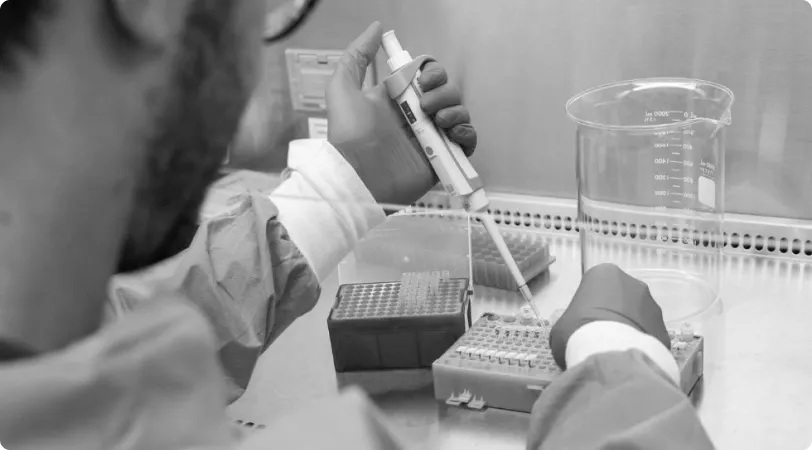Specific Biomarker Investigated for Triple-Negative Breast Cancer Diagnosis
|
By LabMedica International staff writers Posted on 30 Nov 2021 |
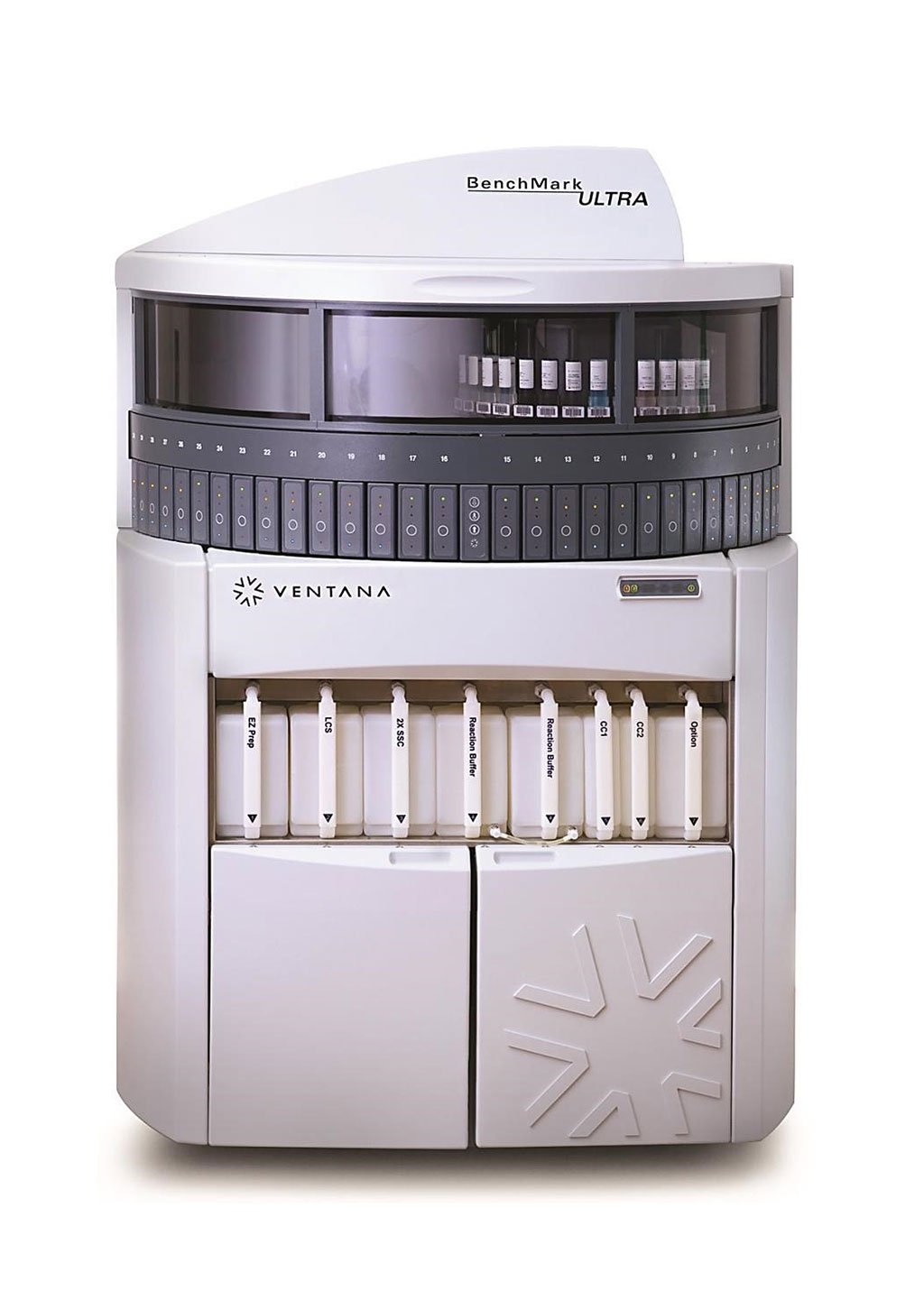
Image: The Ventana BenchMark Ultra autostainer is for cancer diagnostics with automation and the test menu include IHC, ISH, and FITC tests (Photo courtesy of Ventana Medical System)
Triple-negative breast cancer (TNBC) is defined by the lack of estrogen receptor (ER), progesterone receptor (PR), and human epidermal growth factor receptor 2 (HER2) expression and comprises a heterogeneous group of breast cancers that exhibit distinct morphologic features and biological behavior.
Forkhead box transcription factor C1 (FOXC1) is a member of the forkhead box (FOX) transcription factor family, which plays an essential role in embryonic development and maintenance of adult stem and progenitor cell compartments. In breast cancer, high FOXC1 expression enhances the proliferation, migratory ability, and epithelial-mesenchymal transition of basal-like breast cancer (BLBC) cells.
Pathologists at the Shanghai Medical College (Shanghai, China) enrolled in a study a cohort of 2,443 patients diagnosed with invasive breast cancer without distant metastasis between July 2019 and April 2020. Pathologic staging including tumor size (T) and lymph node (N) status was determined by surgical resection. Tumor histologic grading was performed according to the Nottingham grading system by assessing the following three morphologic features: tubule formation, nuclear pleomorphism, and mitotic counts. Hematoxylin-eosin–stained slides were reviewed.
All staining was performed with a Ventana BenchMark Ultra autostainer (Ventana Medical System Inc, Roche, Tucson, AZ. USA). Only nuclear staining was considered for positive AR, FOXC1, and GATA3 expression, whereas cytoplasmic staining characterized positive cytokeratin (CK) 5/6, CK14, and GCDFP-15 expression. Androgen receptor was assessed semiquantitatively with the Allred scoring method, which incorporates the intensity and distribution of reactivity. Immunohistochemistry staining with AR, GCDFP15, CK5/6, and CK14 was considered positive when more than 1% tumor cells were stained. FOXC1 was assessed semiquantitatively according to the distribution of reactivity.
The investigators reported that the expression rate of FOXC1 in TNBC was significantly higher than in other subtypes. The area under the ROC curve confirmed the high diagnostic value of FOXC1 for the prediction of the triple-negative phenotype. The cutoff value of 1% showed a maximized sum of sensitivity and specificity. In TNBC, FOXC1 expression was significantly associated with aggressive tumor phenotypes. Furthermore, FOXC1 expression was primarily observed in invasive breast carcinoma of no special type and metaplastic carcinoma, but rarely in invasive carcinoma with apocrine differentiation. Correspondingly, FOXC1 expression was significantly associated with the expression of basal markers but was negatively correlated with apocrine-related markers in TNBC.
The authors concluded that FOXC1 is a highly specific marker for the triple-negative phenotype. Moreover, immunohistochemical detection of FOXC1 expression can be used as an additional diagnostic tool for the triple-negative phenotype and subclassification in TNBC. The study was published on November 16, 2021 in the journal Archives of Pathology and Laboratory Medicine.
Related Links:
Shanghai Medical College
Ventana Medical System
Forkhead box transcription factor C1 (FOXC1) is a member of the forkhead box (FOX) transcription factor family, which plays an essential role in embryonic development and maintenance of adult stem and progenitor cell compartments. In breast cancer, high FOXC1 expression enhances the proliferation, migratory ability, and epithelial-mesenchymal transition of basal-like breast cancer (BLBC) cells.
Pathologists at the Shanghai Medical College (Shanghai, China) enrolled in a study a cohort of 2,443 patients diagnosed with invasive breast cancer without distant metastasis between July 2019 and April 2020. Pathologic staging including tumor size (T) and lymph node (N) status was determined by surgical resection. Tumor histologic grading was performed according to the Nottingham grading system by assessing the following three morphologic features: tubule formation, nuclear pleomorphism, and mitotic counts. Hematoxylin-eosin–stained slides were reviewed.
All staining was performed with a Ventana BenchMark Ultra autostainer (Ventana Medical System Inc, Roche, Tucson, AZ. USA). Only nuclear staining was considered for positive AR, FOXC1, and GATA3 expression, whereas cytoplasmic staining characterized positive cytokeratin (CK) 5/6, CK14, and GCDFP-15 expression. Androgen receptor was assessed semiquantitatively with the Allred scoring method, which incorporates the intensity and distribution of reactivity. Immunohistochemistry staining with AR, GCDFP15, CK5/6, and CK14 was considered positive when more than 1% tumor cells were stained. FOXC1 was assessed semiquantitatively according to the distribution of reactivity.
The investigators reported that the expression rate of FOXC1 in TNBC was significantly higher than in other subtypes. The area under the ROC curve confirmed the high diagnostic value of FOXC1 for the prediction of the triple-negative phenotype. The cutoff value of 1% showed a maximized sum of sensitivity and specificity. In TNBC, FOXC1 expression was significantly associated with aggressive tumor phenotypes. Furthermore, FOXC1 expression was primarily observed in invasive breast carcinoma of no special type and metaplastic carcinoma, but rarely in invasive carcinoma with apocrine differentiation. Correspondingly, FOXC1 expression was significantly associated with the expression of basal markers but was negatively correlated with apocrine-related markers in TNBC.
The authors concluded that FOXC1 is a highly specific marker for the triple-negative phenotype. Moreover, immunohistochemical detection of FOXC1 expression can be used as an additional diagnostic tool for the triple-negative phenotype and subclassification in TNBC. The study was published on November 16, 2021 in the journal Archives of Pathology and Laboratory Medicine.
Related Links:
Shanghai Medical College
Ventana Medical System
Latest Pathology News
- New Tool Could Revolutionize Acute Leukemia Diagnosis
- New Microscope Promises to Speed Up Medical Diagnostics
- ESR Testing Breakthrough Extends Blood Sample Stability from 4 to 28 Hours
- Accurate Pathological Analysis Improves Treatment Outcomes for Adult Fibrosarcoma
- Clinicopathologic Study Supports Exclusion of Cervical Serous Carcinoma from WHO Classification
- Mobile-Compatible AI-Powered System to Revolutionize Malaria Diagnosis
- Compact AI-Powered Microscope Enables Rapid Cost-Effective Cancer Scoring
- New Method Enables Precise Detection of Nanoplastics in Body
- AI-Powered Tool Improves Cancer Tissue Analysis
- AI Platform Uses 3D Visualization to Reveal Disease Biomarkers in Multiomics Data
- AI Tool Detects Early Signs of Blood Mutations Linked to Cancer and Heart Disease
- Multi-Omics AI Model Improves Preterm Birth Prediction Accuracy
- AI-Based Approach Diagnoses Colorectal Cancer from Gut Microbiota
- Topical Fluorescent Imaging Technique Detects Basal Cell Carcinoma
- AI Detects Early Prostate Cancer Missed by Pathologists
- AI Model Simultaneously Detects Multiple Genetic Colorectal Cancer Markers in Tissue Samples
Channels
Clinical Chemistry
view channel
Gold Nanoparticles to Improve Accuracy of Ovarian Cancer Diagnosis
Ovarian cancer is considered one of the deadliest cancers, in part because it rarely shows clear symptoms in its early stages, and diagnosis is often complex. Current approaches make it difficult to accurately... Read more
Simultaneous Cell Isolation Technology Improves Cancer Diagnostic Accuracy
Accurate cancer diagnosis remains a challenge, as liquid biopsy techniques often fail to capture the complexity of tumor biology. Traditional systems for isolating circulating tumor cells (CTCs) vary in... Read moreMolecular Diagnostics
view channel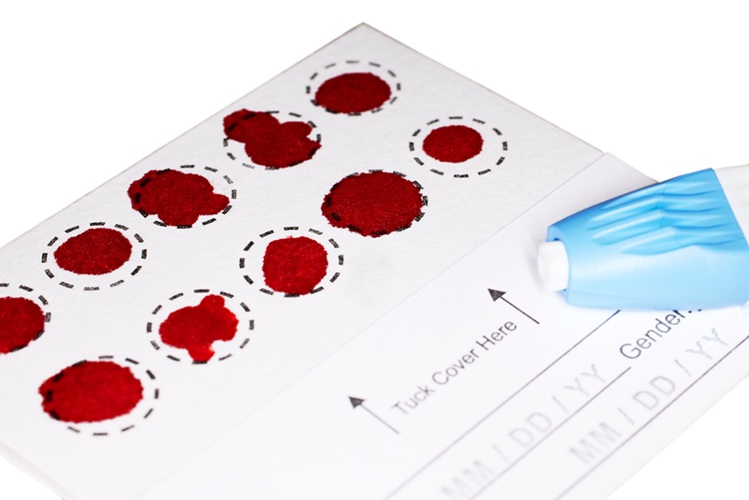
Dried Blood Spot Test Reliably Detects Congenital Cytomegalovirus at Birth
Congenital cytomegalovirus (cCMV) is one of the most common infections passed from mother to child during pregnancy, affecting about 1 in 200 newborns. While many infants born with cCMV experience no lasting... Read more
Blood Test Can Aid Spinal Cord Injury Recovery
Spinal cord injuries affect more than 20 million people worldwide, with nearly a million new cases each year. They are often life-altering conditions requiring intensive care, yet early diagnosis and prognosis... Read more
Urine Protein Test Can Predict Dementia Risk
Dementia remains one of the most pressing health challenges worldwide, with age as the greatest risk factor. Increasingly, research suggests that diseases in other organs, such as the kidneys, may play... Read more
First And Largest Prospective Study of Urine-Based Genetic Methylation Testing for Cervical Cancer Screening
Cervical cancer remains one of the most serious threats to women’s health, with millions still lacking access to effective screening. While human papillomavirus (HPV) vaccination programs are expanding... Read moreHematology
view channel
Viscoelastic Testing Could Improve Treatment of Maternal Hemorrhage
Postpartum hemorrhage, severe bleeding after childbirth, remains one of the leading causes of maternal mortality worldwide, yet many of these deaths are preventable. Standard care can be hindered by delays... Read more
Pioneering Model Measures Radiation Exposure in Blood for Precise Cancer Treatments
Scientists have long focused on protecting organs near tumors during radiotherapy, but blood — a vital, circulating tissue — has largely been excluded from dose calculations. Each blood cell passing through... Read more
Platelets Could Improve Early and Minimally Invasive Detection of Cancer
Platelets are widely recognized for their role in blood clotting and scab formation, but they also play a crucial role in immune defense by detecting pathogens and recruiting immune cells.... Read more
Portable and Disposable Device Obtains Platelet-Rich Plasma Without Complex Equipment
Platelet-rich plasma (PRP) plays a crucial role in regenerative medicine due to its ability to accelerate healing and repair tissue. However, obtaining PRP traditionally requires expensive centrifugation... Read moreImmunology
view channel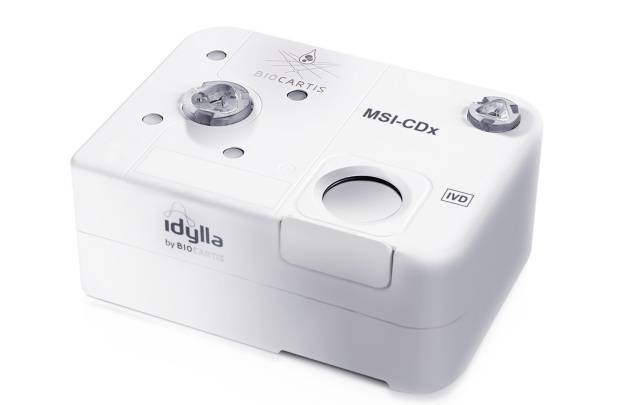
Companion Diagnostic Test for CRC Patients Identifies Eligible Treatment Population
Colorectal cancer remains one of the leading causes of cancer-related deaths worldwide, and identifying which patients will benefit most from targeted immunotherapies is critical. Existing diagnostic methods... Read more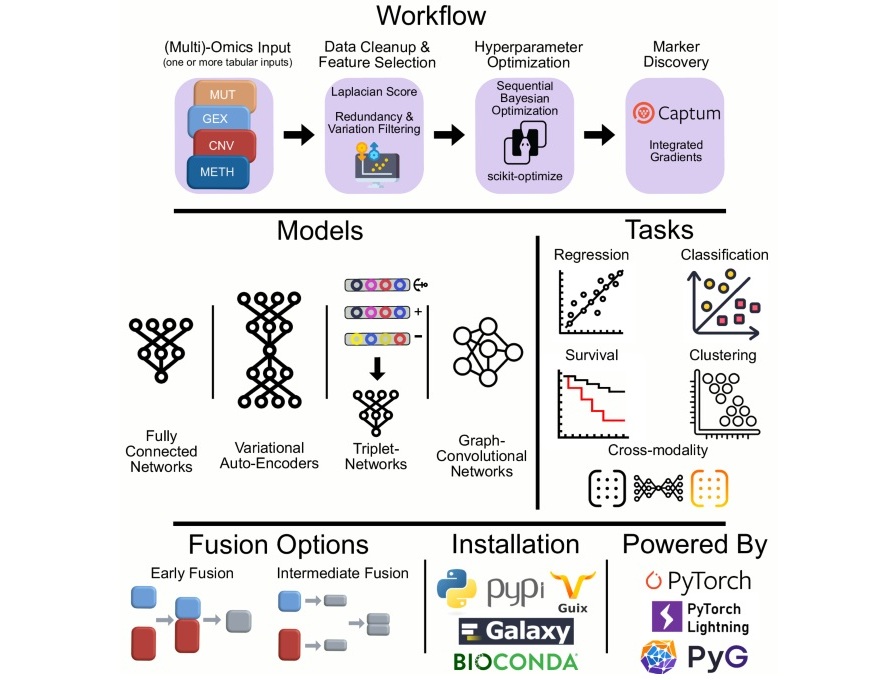
Novel Tool Uses Deep Learning for Precision Cancer Therapy
Nearly 50 new cancer therapies are approved each year, but selecting the right one for patients with highly individual tumor characteristics remains a major challenge. Physicians struggle to navigate the... Read more
Companion Diagnostic Test Identifies HER2-Ultralow Breast Cancer and Biliary Tract Cancer Patients
Breast cancer is the most common cancer in Europe, with more than 564,000 new cases and 145,000 deaths annually. Metastatic breast cancer is rising in younger populations and remains the leading cause... Read moreMicrobiology
view channel
Fast Noninvasive Bedside Test Uses Sugar Fingerprint to Detect Fungal Infections
Candida bloodstream infections are a growing global health threat, causing an estimated 6 million cases and 3.8 million deaths annually. Hospitals are particularly vulnerable, as weakened patients after... Read more
Rapid Sepsis Diagnostic Device to Enable Personalized Critical Care for ICU Patients
Sepsis is a life-threatening condition that occurs when the body’s response to infection spirals out of control, damaging organs and leading to critical illness. Patients often arrive at intensive care... Read moreTechnology
view channel
Hybrid Pipette Combines Manual Control with Fast Electronic Aliquoting
Manual pipettes offer the control needed for delicate tasks such as mixing or supernatant removal, but typically fall short in repetitive workflows like aliquoting. Electronic pipettes solve this problem... Read more
Coral-Inspired Capsule Samples Hidden Bacteria from Small Intestine
The gut microbiome has been linked to conditions ranging from immune disorders to mental health, yet conventional stool tests often fail to capture bacterial populations in the small intestine.... Read more
Rapid Diagnostic Technology Utilizes Breath Samples to Detect Lower Respiratory Tract Infections
Respiratory tract infections (LRTIs) are leading causes of illness and death worldwide, particularly among vulnerable populations such as the elderly, young children, and those with compromised immune systems.... Read moreIndustry
view channel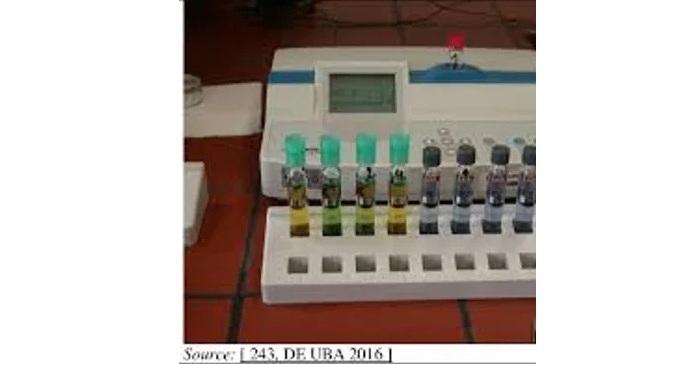
Lumiquick Acquires Aoxre to Expand Global IVD and Research Capabilities
Oxidative stress has been linked to cellular damage involving proteins, DNA, and lipids, and it plays a role in conditions such as cardiovascular disorders, diabetes, neurodegenerative diseases (Alzheimer’s... Read more
Lunit and Agilent Partner to Develop AI-Powered Cancer Diagnostics
Biomarker testing plays a critical role in precision oncology, guiding tailored therapies for patients. However, current methods often rely heavily on manual interpretation, which can introduce variability... Read more
Qiagen and Oxford Gene Technology Partner on Sequencing Panel Interpretation
In clinical research, next-generation sequencing (NGS) panels provide essential insights for genetic analysis, but many laboratories face challenges in transforming raw sequencing data into clinically... Read more